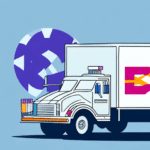Understanding Hazmat in the Supply Chain
Hazmat, short for hazardous materials, are substances or materials that pose a potential hazard to health, safety, or the environment. These hazardous materials can be found in various industries, including manufacturing, transportation, healthcare, and construction, among others. Compliance with hazmat regulations is crucial to ensure the safety of workers and the public.
Hazmat Regulations and Compliance
The regulations regarding the transportation and handling of hazardous materials are set by several governing bodies, including the Department of Transportation (DOT) and the Environmental Protection Agency (EPA). Companies that handle hazmat materials must follow strict guidelines and regulations both in terms of transportation and storage. Non-compliance can result in significant fines, penalties, and legal prosecution. It is essential for businesses to stay up-to-date on all regulations and ensure that their employees are adequately trained in handling hazardous materials safely.
According to the Bureau of Labor Statistics, workplace injuries related to hazardous materials dropped by 8% in the past year due to improved compliance measures.
Proper Labeling and Documentation
One of the most critical aspects of hazmat compliance is proper labeling and documentation. All hazardous materials must be labeled correctly, indicating the type of material, any potential hazards, and proper handling instructions. Additionally, all shipments of hazardous materials must be accompanied by proper documentation, including a bill of lading and a hazardous materials shipping paper. Failure to provide accurate labeling and documentation can result in severe consequences, including fines and legal action.
Emergency Response Planning
Another important aspect of hazmat compliance is emergency response planning. Companies that handle hazardous materials must have a comprehensive emergency response plan in place in case of an accident or spill. This plan should include procedures for containing and cleaning up spills, as well as protocols for notifying emergency responders and the appropriate regulatory agencies. By having a well-thought-out emergency response plan, companies can minimize the risk of injury or damage to the environment in the event of an accident.
The Importance of Hazmat Training for Supply Chain Personnel
The safe handling of hazardous materials requires proper training and education. Hazmat training is vital for supply chain personnel to ensure that they are capable of handling materials safely and efficiently. The training should include topics such as identifying hazards, emergency response procedures, and proper handling and transportation of hazardous materials. It is the employer's responsibility to provide adequate training to their employees and ensure that they follow all guidelines set by regulatory bodies.
Furthermore, hazmat training should be an ongoing process, as new materials and regulations are constantly being introduced. It is important for supply chain personnel to stay up-to-date with the latest information and best practices to ensure their safety and that of those around them. Regular refresher courses and training sessions should be provided to ensure that employees are always aware of potential hazards and how to handle them properly.
Hazmat Shipping: Best Practices and Guidelines
When it comes to hazmat shipping, there are specific guidelines and best practices that must be followed to ensure the safety of everyone involved. Hazmat shipping regulations mandate the use of proper packaging and labeling for hazardous materials. The packages must be marked and labeled to indicate the type of hazardous material they contain. In addition, the shipping containers must be appropriately secured and packed to avoid any accidental spills or leaks.
Specialized Training for Hazmat Shipping
Hazmat shipping requires specialized training for those involved in the process. This includes training on how to properly handle and transport hazardous materials, as well as how to respond in the event of an emergency. Proper training can help prevent accidents and ensure that any incidents are handled quickly and effectively.
Compliance with International Regulations
Compliance with international regulations is another key aspect of hazmat shipping. Different countries may have their own specific requirements for hazmat shipping, and it is important to be aware of and comply with these regulations when shipping hazardous materials across borders. Failure to comply with international regulations can result in fines, delays, and legal action.
Common Hazards in the Supply Chain and How to Mitigate Them
The supply chain can present numerous hazards that may lead to accidents and injuries. Some of the common hazards include:
- Fire and Explosions: Improper handling of flammable materials can lead to fires and explosions.
- Chemical Exposure: Exposure to harmful chemicals can cause serious health issues.
- Environmental Hazards: Spills and leaks can harm the environment.
- Physical Injuries: Manual handling of heavy objects can result in strains and sprains.
- Supply Chain Disruptions: Natural disasters or political unrest can disrupt the supply chain.
Mitigating these risks is essential to protect employees and the public from harm. The best strategies include:
- Following strict guidelines and regulations.
- Using proper equipment and protective gear.
- Providing adequate training to employees.
- Implementing ergonomic workstations to reduce manual handling risks.
- Developing contingency plans to handle supply chain disruptions.
Planning for Hazmat Emergencies in the Supply Chain
Despite all safety measures and precautions, hazmat incidents can still occur. It is essential to have a plan in place for emergency response in such cases. The emergency plan should include procedures for evacuations, notification of authorities, containment of spills, and assessing and managing potential risks. Having a well-documented emergency response plan can help minimize the damage caused by a hazmat incident and keep employees and the public safe.
Regularly reviewing and updating the emergency response plan ensures it remains relevant and effective. This includes conducting regular drills and training sessions for employees to ensure they are familiar with the procedures and can respond quickly and efficiently in the event of an emergency. Additionally, a clear communication plan should be in place to keep all stakeholders informed throughout the emergency response process.
Hazmat Packaging: Choosing the Right Materials and Methods
Packaging hazardous materials correctly is crucial for their safe transport and storage. The packaging should prevent spills or leaks and comply with regulations set by governing bodies. Choosing the right packaging materials and methods helps mitigate the risks of accidents and injuries during transport and storage.
Selecting Appropriate Packaging Materials
When selecting packaging materials, consider the specific properties of the hazardous material being transported or stored. For example, some materials may require packaging that is resistant to corrosion or high temperatures. Additionally, the packaging should withstand potential impacts or vibrations during transport.
Specialized Packaging Methods
Some hazardous materials may require specialized packaging methods, such as vacuum sealing or double-walled containers. It is important to follow the guidelines and regulations set forth by governing bodies to ensure that the packaging method is appropriate for the specific material being transported or stored.
Hazmat Transportation: Modes of Transport and Safety Considerations
Transporting hazardous materials presents unique challenges. The mode of transport—whether by air, land, or sea—must comply with specific regulations regarding packing, labeling, and marking. Safety considerations include avoiding exposure to high temperatures, pressure, or vibrations. Handlers must be adequately trained to manage hazardous materials during transportation, ensuring that potential hazards are mitigated.
Environmental Impact and Risk Mitigation
Transporting hazardous materials can have significant environmental impacts in the event of a spill or leak, contaminating surrounding ecosystems. To minimize this risk:
- Implement emergency response plans.
- Use appropriate containment and cleanup measures.
- Consider alternative, less hazardous materials or methods of transportation when possible.
Hazmat Documentation and Record-Keeping Requirements
Maintaining proper documentation and records of all hazardous materials being transported, received, and stored is mandatory. Documentation should include information about the type of material, its quantity, the container used, and other relevant details. Records must be kept for at least three years to ensure regulatory compliance.
Proper Labeling and Marking
All hazardous materials must be properly labeled and marked. This includes:
- Hazard warning labels and placards on containers.
- Proper shipping names and identification numbers on containers.
Comprehensive Employee Training
Providing proper training to all employees who handle hazardous materials is crucial. Training should cover:
- Proper handling, storage, and transportation of hazardous materials.
- Emergency response procedures.
By ensuring comprehensive training and maintaining accurate documentation and records, companies can enhance the safety of their employees and protect the environment.
Hazmat Inspections: What to Expect and How to Prepare
Inspections are a critical component of the regulatory process for hazardous materials. Government agencies conduct inspections to ensure compliance with regulations. During inspections, officials may review documentation, packaging, labeling, and other compliance-related aspects. Businesses should prepare for inspections by:
- Ensuring all documentation is up-to-date and accurate.
- Reviewing policies and procedures to confirm compliance with all regulations.
- Conducting internal audits to identify and rectify potential compliance issues.
Hazmat Incident Response: Roles and Responsibilities in the Supply Chain
In the event of a hazmat incident, multiple parties are involved, including the business, employees, authorities, and first responders. Each party has specific roles and responsibilities to ensure the incident is managed safely and efficiently.
- Businesses: Must have an emergency response plan and ensure employees are trained.
- Employees: Must know their responsibilities and follow the emergency procedures.
- Authorities: Provide oversight and ensure regulatory compliance.
- First Responders: Manage the immediate response to contain and mitigate the incident.
Collaboration among all parties is essential to manage any hazardous incident safely.
The Future of Hazmat Regulations in the Supply Chain Industry
Hazmat regulations are continually evolving, driven by increasing environmental and safety concerns. This evolution leads to more stringent regulations aimed at enhancing safety and reducing environmental impact. It is essential for businesses to stay informed about these changes and adapt their policies and procedures accordingly to ensure compliance and mitigate risks.
Emerging trends include the integration of advanced technologies for better tracking and management of hazardous materials, as well as increased emphasis on sustainability and reducing the carbon footprint of hazmat transportation.
In conclusion, understanding and complying with hazmat regulations is crucial for the safety of personnel and the public. A comprehensive training program, robust emergency planning, proper packaging and labeling, and a focus on continuous improvement can significantly reduce hazmat incidents, ensure employee safety, and maintain regulatory compliance.
For more information and resources on hazmat compliance and best practices, visit ShipScience.






















